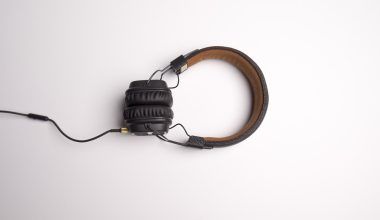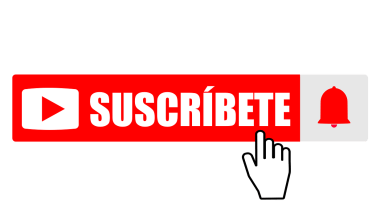If you’re someone who loves creating content for YouTube, you may have come across the term “copyright claim” at some point. For many creators, this phrase can spark confusion and even a little anxiety. But don’t worry—understanding what a copyright claim means and how to handle it isn’t as complicated as it might seem. In this blog, we’ll break it down step by step in simple language so you can focus on what you do best: creating amazing content.
What Is a Copyright Claim?
A copyright claim on YouTube happens when someone—usually the owner of a copyrighted work—lets YouTube know that part of your video uses their content. It’s like a flag that says, “Hey, this belongs to me.” This can include music, video clips, images, or even sound effects. Copyright claims are usually made through YouTube’s Content ID system, an automated tool that matches your video’s content with copyrighted material in its database.
But here’s the good news: a copyright claim isn’t the same as a copyright strike. It’s more like a notification rather than a penalty. So, take a deep breath—it’s not the end of the world.
Why Did You Get a Copyright Claim?
One of the most common reasons for a copyright claim is using someone else’s music in your video. For example, if you added a popular song as background music, YouTube’s Content ID system might recognize it and issue a claim. Other reasons could include:
- Using movie or TV show clips
- Including someone else’s YouTube video in your content
- Using images or graphics you don’t own
Even if it’s unintentional, the Content ID system is pretty good at catching these things. So, if you’re wondering, “Why me?”—you’re not alone. It happens to a lot of creators.
What Happens When You Get a Copyright Claim?
When a copyright claim is placed on your video, YouTube will notify you. You’ll see this in your YouTube Studio under the “Content” tab. Here’s what typically happens:
- Monetization Changes: The copyright owner might choose to monetize your video, meaning they’ll earn money from ads instead of you.
- Video Visibility: In some cases, the video might be blocked in certain countries or regions.
- Audio Muted: If it’s a music-related claim, the audio for the copyrighted portion might be muted.
It’s important to note that a copyright claim doesn’t affect your channel’s standing. It’s more of a way for the copyright owner to manage their content.
How to Check for Copyright Claims
If you’re not sure whether your video has a copyright claim, you can easily check:
- Go to YouTube Studio.
- Click on the “Content” tab.
- Look for videos marked with a “Copyright Claim” notification.
- Click “See Details” to find out more about the claim, including which part of the video is affected and who made the claim.
This information helps you decide what steps to take next.
What Are Your Options After Receiving a Copyright Claim?
So, you’ve got a copyright claim. Now what? Here are your options:
- Do Nothing: If you don’t mind the claim and the video’s new monetization status, you can leave it as it is.
- Trim the Content: YouTube offers a tool to remove the claimed portion of your video.
- Replace the Music: If the claim is for a song, you can swap it out with a free track from YouTube’s Audio Library.
- Mute the Audio: For music claims, you can also choose to mute the affected segment.
- Dispute the Claim: If you believe the claim is incorrect, you can dispute it. However, this should only be done if you’re sure you have the right to use the content.
Can You Avoid Copyright Claims?
Yes, you can take steps to avoid copyright claims on YouTube. Here are some tips:
- Use Royalty-Free Music: YouTube’s Audio Library has a wide range of tracks you can use for free.
- Create Your Own Content: Make your own music, graphics, and video clips whenever possible.
- Get Permission: If you really want to use someone else’s work, ask for their permission.
- Read Licenses Carefully: If you’re buying stock footage or music, make sure the license allows you to use it on YouTube.
By being proactive, you can reduce the chances of running into copyright issues.
What’s the Difference Between a Copyright Claim and a Copyright Strike?
A copyright claim is not the same as a copyright strike. Here’s how they differ:
- Copyright Claim: A notification about using copyrighted material. It doesn’t harm your channel.
- Copyright Strike: A more serious issue that happens when a copyright owner manually reports your video. Strikes can lead to penalties, including losing your channel if you get three strikes.
Understanding this difference is key to managing your content and keeping your channel safe.
What Is Fair Use, and Does It Protect You?
Fair use is a legal doctrine that allows you to use copyrighted material in certain cases without getting permission. For example, you might be protected by fair use if you’re:
- Creating educational content
- Making parodies
- Using clips for commentary or criticism
However, fair use isn’t a free pass. It’s a gray area and can depend on factors like how much of the material you use and whether your video affects the market for the original work. If you’re relying on fair use, be prepared to defend your case if a claim is disputed.
What to Do if a Claim Is Wrong
Mistakes happen. If you believe a copyright claim is wrong, you can dispute it. To do this:
- Go to YouTube Studio and find the video with the claim.
- Click “See Details” and then “Dispute.”
- Follow the steps and provide a valid reason for your dispute.
Keep in mind that false disputes can lead to bigger problems, so only do this if you’re sure.
Final Thoughts
Getting a copyright claim on YouTube isn’t the end of the road. It’s more of a learning opportunity to better understand the platform’s rules and how to protect your content. By using copyright-free resources, creating your own materials, and understanding the claims process, you can focus on growing your channel without the added stress.
Remember, every YouTuber faces challenges along the way. A copyright claim is just a small bump in the road to success. So, keep creating, stay informed, and don’t let anything hold you back from sharing your passion with the world.
For further reading, explore these related articles:
- Steven Tyler: The Voice of Aerosmith and a True Rock Icon
- Exploring the Story Behind Luke Combs Fast Car Lyrics
For additional resources on music marketing and distribution, visit DMT Records Pvt. Ltd..






